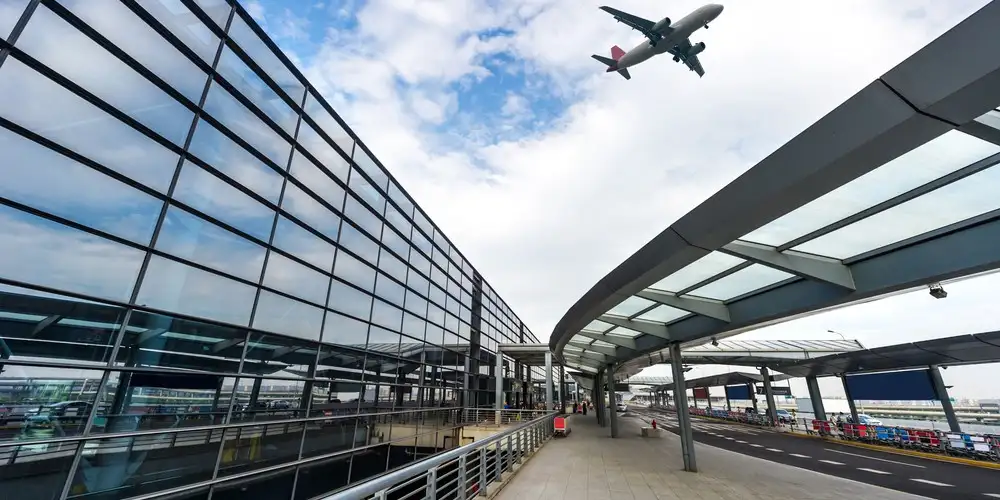
Always know your plane. The type of aircraft on which you’re flying can have a big effect on the quality of your trip.
The most important time to “get to know your plane” is when you’re selecting a flight and buying a ticket. Most airlines, OTAs, and search engines show you the plane type during the search phase, although you may have to click on a “details” button for more information. And most airlines and OTAs give you a seat selection option before you make a final commitment to pay.
Although some important factors, like noise or smoothness, are inherent to the plane model itself, others depend on how each airline outfits its planes. Similarly, some choice factors apply to all classes of service; others are specific to each class.
Noise
Takeoffs can be noisy in much of the plane, but once you’re at cruising altitude, the noise in most of the plane results from turbulent airflow around the cabin—not the engines. (But to the extent that engine noise is a problem, newer engines are quieter than older engines.) Jet-noise problems are most severe in planes with rear-mounted engines, where noise in the last few rows can be truly offensive, but rear seats in planes with wing-mounted engines area typically the noisiest. And propeller noise and vibration in turboprops can be really annoying, anywhere in the plane.
- Favor: A380s and 787s, with their latest-generation engines
- Avoid: Seats far to the rear, and especially in the last three to four rows in MD80s and MD90s among the mainline planes and the last two to three rows in most smaller regional jets; avoid turboprops
Smoothness
In general, the bigger the plane, the less bumpy the trip. Jumbo jets are like big cruise ships: relatively smooth even in rough air.
- Favor: A380s, 747s, and 787s
- Avoid: Small regional jets and turboprops
Cabin Air
The latest generation of jets—the 787 and soon-to-come A350—provides lower cabin altitudes and higher humidity than older models. You’ll notice the difference after a long flight.
- Favor: 787s and A350s
Related: What Not to Wear in the Airport Security Line
Seating
Each airline decides how much front-to-rear space, or seat pitch, to provide, regardless of the plane model; that can vary from a generous 33-34 inch pitch on JetBlue to a very tight 28-inch pitch on Spirit. The standard on most other mainline planes is 30-32 inches; regionals can be a tad tighter. The industry likes to call this “legroom,” but many travelers suffer more from tight seating at the working level, where the seat in front is too close to allow them to read a tablet or Kindle or work on a laptop. Most economy seats recline only a few inches, and a few airlines provide no recline at all—an advantage when rows are closely spaced.
Unlike front-to-rear space, side-to side seat spacing on most planes does depend on airplane model. In general, economy seats come in two nominal widths: 18 inch and 17 inch. Planes with 18-inch seats include most A318/319/320/321, most A330/340, A380, many 767, and Embraer 170/175/190/195. These large Embraers are especially comfortable in that they are configured with two-by-two rows, with no middle seats. Planes with 17-inch seats include 737, 747, 757, and most regional jets and turboprops.
It’s important to note that there are airline-to-airline differences in the number of seats per row, and therefore width, on two wide-body planes:
- Favor: 18-inch (or better) nine-across seats on 777 and eight-across seats on 787
- Avoid: 17-inch 10-across seats on 777 and nine-across seats on 787; especially avoid a few foreign A330/340 models with nine-across 16-inch seats
Overhead Bin Space
Overhead bin space is a potential factor that would be useful to know in advance: It varies mainly by plane model, but occasionally by airline as well. Unfortunately, we know of no online source of detailed data on bin design and space. In general, however, newer plane models have larger bins.
Entertainment
Again, entertainment is each airline’s call. The top level, widely available in newer planes, is on-demand multichannel TV and movies. Some airlines with older planes hand out pre-loaded tablets. Next best is seatback TV, where you typically have more limited choice of program and timing. A few older planes—the ones airlines are about to retire—still offer only overhead screens showing a single program. No airlines provide entertainment on MD80/90, some airlines provide no entertainment on their smaller short-haul mainline planes, and only a few regional jets have entertainment.
Related: 10 Tricks for Sleeping Well on a Plane
Power Outlets
Many travelers want to be able to keep their electronic devices fully charges. Some mostly newer planes provide standard plug AC power at some seats and a few provide low-voltage DC through either a USB connection or an automobile-type socket. You’ll have to contact your airline for this information.
Wi-Fi
Onboard Wi-Fi is steadily becoming more important, and, fortunately, airlines are installing it in more planes, and providers are offering better bandwidth. Alaska, Delta, JetBlue, and Virgin America are close to having fleet-wide Wi-Fi. Although some comparison websites reveal which airline/plane combinations offer Wi-Fi, they do not differentiate between limited and wide-bandwidth.
Premium Economy
Airlines based in North America, other than Air Canada, offer what we call a “semi-premium” option: three to five inches of extra pitch, but with the same narrow side-to-side spacing as regular economy. Some airlines add minor improvements in cabin service and meals; others do not.
Many other intercontinental airlines offer “true” premium economy with 6-10 inches more pitch and seats at least two inches wider than regular economy. True premium economy is mostly limited to wide-body planes, where it requires a maximum of seven seats per row in A330/340, A380 upper deck, and 787, and eight seats per row in 747 and 777; some airlines do even better. OpenSkies is the only carrier we know that offers true premium economy in a 757, at four-across.
Business and First Class
International long-haul business class and first class have become unbelievably opulent these days, with lots of flight attendants, elaborate meal services, fussy wine lists, entertainment options, and, in first class, enclosed suites. Most seats convert to flat for overnight flights: The main differences are: whether the seat is “angle flat,” with the footrest tucked under the seat in front, or fully horizontal flat bed, and whether each seat has direct aisle access. Different airlines use differing approaches to layout: Some seats fly backward, while some seats are arranged in a diagonal herringbone pattern. These days, flat bed is becoming the competitive norm—Delta, for example, is 100 percent flat bed.
Most short-haul business class, or first class in the U.S. and Canada, features much wider seats than in economy, better cabin service, meals, and usually “free” checked baggage and other services that require payment in economy. According to industry lore, very few U.S. and Canadian travelers actually pay for first class seats; those seats go mostly to high-level frequent flyers.
Your main worry is paying a fortune for a “business class” seat on a red-eye flight that does not lie flat at all. You find this on a few airlines, including Copa, Icelandair and most of the long-haul low-fare airlines based in Europe.
Getting the Information
You can find most of the airplane details—literally “the skinny” when it comes to economy seats—on several online sources. The most complete coverage is on our sister site SeatGuru, which shows seat plans, dimensions, in-flight entertainment, power availability, Wi-Fi availability, and seat recline; it also highlights “bad” seats. If SeatGuru lists any airline you’re considering, you need go no further.
Other online seat sources, SeatExpert, SeatMaestro, and SeatPlans provide less information on each plane; they’re useful only for obscure foreign lines that SeatGuru does not cover. If you’re interested in the more technical stuff, most airlines post more than you need to know online in the “our fleet” parts of their websites.
You Might Also Like:
We hand-pick everything we recommend and select items through testing and reviews. Some products are sent to us free of charge with no incentive to offer a favorable review. We offer our unbiased opinions and do not accept compensation to review products. All items are in stock and prices are accurate at the time of publication. If you buy something through our links, we may earn a commission.
Related
Top Fares From
Today's Top Travel Deals
Brought to you by ShermansTravel
Greece: 9-Night Vacation, Incl. Meteora &...
Exoticca
 vacation
$2099+
vacation
$2099+
New Year Sale: Luxe, 9-Nt Alaska...
Oceania Cruises
 cruise
$3599+
cruise
$3599+
Ohio: Daily Car Rentals from Cincinnati
85OFF.com
 Car Rental
$19+
Car Rental
$19+



